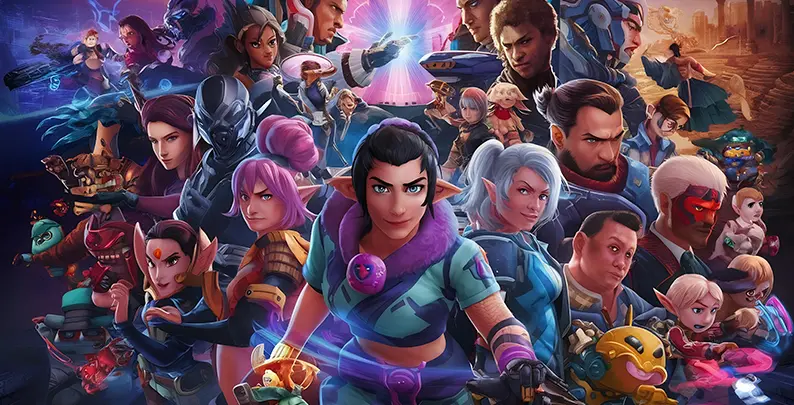Behind every groundbreaking release lies a fusion of design mastery, artistic craftsmanship, and emotional storytelling that turns digital spaces into living worlds. These creative pillars define what makes AAA gaming more than entertainment; they make it art.
The Creative Vision Behind AAA Game Design
Crafting Immersive Player Experiences
At the heart of every great AAA title is the desire to make players feel something: awe, fear, wonder, triumph. This emotional immersion comes from responsive environments, dynamic AI, and layered systems that react intelligently to player behavior. From the subtle rustle of leaves to the tension in a boss encounter, every sensory element works together to make the world feel alive, not simulated.
Balancing Gameplay, Emotion & Visual Identity
AAA design thrives on balance, distinguishing between challenge and reward, spectacle and subtlety. Developers meticulously synchronize mechanics, soundscapes, and visuals to create gameplay loops that engage intellect and emotion. A cohesive visual identity ensures the game world doesn’t just play beautifully but feels uniquely recognizable. You can identify Horizon Zero Dawn or God of War from a single screenshot.
How Artistic Direction Shapes Brand Legacy
A game’s art direction is its visual soul. Every color palette, lighting choice, and animation style contributes to how players remember the experience. Thoughtful visual design can turn a new IP into an icon, like The Legend of Zelda’s cel-shaded warmth or Cyberpunk 2077‘s neon chaos. For studios, art direction isn’t decoration. It’s brand storytelling, crafting recognition that endures beyond the release cycle.
AAA Game Character Design

A few things define a AAA game, like its characters. They are the emotional anchors of the story, the faces we root for, cry with, and remember decades later.
What Defines a AAA Game Character: Depth, Emotion & Memorability
AAA game characters are crafted to evoke empathy and meaning. They blend substantial narrative backstories, visual symbolism, and performance-driven emotion to feel human, even when they’re not. When players think of Geralt, Lara Croft, or Ellie, they recall the gameplay and the emotional journey those characters took them on.
The AAA Game Character Design Pipeline: From Concept to Playable Model
| Stage |
Focus Area |
Tools & Techniques |
| Concept & Silhouette |
Early sketches, personality shaping, thematic exploration |
Photoshop, Procreate |
| Sculpting & Texturing |
High-poly modeling, retopology, and realistic materials |
ZBrush, Substance Painter, Marvelous Designer |
| Rigging & Animation |
Skeleton setup, motion capture integration, procedural animation |
Maya, MotionBuilder, custom tools |
| Final Integration |
In-engine polish, shader tuning, performance optimization |
Unreal Engine, Unity, proprietary engines |
This pipeline ensures that every movement, facial expression, and visual cue connects emotionally while meeting technical benchmarks for realism.
Balancing Realism & Stylization for Impact
AAA game art studios walk a fine line between lifelike realism and stylized expressiveness. Here’s how they differ:
| Approach |
Advantages |
Emotional Effect |
Examples |
| Photorealism |
Immersive, cinematic detail; appeals to mature audiences |
Emotional authenticity and intensity |
The Last of Us Part II, Red Dead Redemption 2 |
| Stylization |
Distinctive, accessible, timeless aesthetic |
Broader emotional appeal; creative freedom |
Overwatch, Zelda: Breath of the Wild |
Modern AAA titles blend both, achieving a visually striking yet emotionally grounded identity.
Lessons from Iconic AAA Game Characters Design
Characters like Geralt of Rivia, Ellie, and Arthur Morgan prove that characters transcend their medium when storytelling, performance, and design align. Their gestures, tone, and arcs resonate because they’re rooted in authenticity, reflecting the player’s own struggles and victories.
Read this guide for learning more about outstanding AAA game character art.
Environmental & Visual Design
Building Worlds That Feel Alive
A great AAA game environment doesn’t just frame the story. It tells one. Every ambient sound, shifting shadow, or NPC routine adds to the illusion of life. Studios use AI-driven systems for wildlife behavior, weather, and physics to create ecosystems that breathe with the player’s presence.
Lighting, Composition & Atmosphere
Lighting is one of the most powerful storytelling tools in AAA design. It directs attention, evokes mood, and deepens emotion. Combined with strong composition and atmospheric effects, it creates cinematic depth, making players stop mid-game just to take a screenshot.

Asset Optimization & Modularity
AAA game environments are massive, yet they must perform flawlessly. Studios employ modular asset kits, instancing, and Level of Detail (LOD) systems to balance scope and performance. These pipelines allow artists to render breathtakingly detailed worlds that run smoothly across PC, console, and cloud platforms.
Narrative Design & Storytelling Integration
Writing for Immersion & Emotional Depth
Great storytelling in games is less about exposition and more about experience. AAA writers weave layered narratives that mirror the player’s emotional state, turning choices, dialogue, and discovery into tools for empathy. The best stories don’t just entertain. They leave echoes of meaning long after the controller is set down.
Dialogue, Cinematics & Interactive Storytelling
From cinematic cutscenes to branching dialogues, AAA storytelling now mirrors the complexity of film and theater. Fully voiced characters, facial motion capture, and spatial audio let players feel every heartbeat of the story, not just watch it unfold.

Dynamic Narratives & Player Agency
The modern AAA narrative is a living system, adapting to player choices and consequences. Dynamic storytelling, powered by AI, procedural logic, and player data, personalizes each experience, ensuring no two playthroughs feel identical. This deepens engagement and transforms passive players into active storytellers.
Design and artistry separate memorable games from forgettable ones. When visuals, characters, environments, and narrative work in harmony, they create experiences that players carry with them long after the credits roll.








